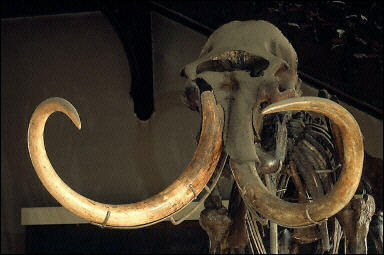

Diversity in material culture is visible ca. Maize and manioc (or cassava), domesticated outside the land bridge, were introduced in Preceramic times, early in the period between 70 BP, and gradually dominated regional agriculture as they became more productive, and as human populations increased and spread into virgin areas. Some Precolumbian residents altered vegetation immediately after first arrival at least 11,000 years ago, and began to add domesticated crops to their subsistence inventory between 90 BP.

The ancestors of modern-day speakers of Chibchan and Chocoan languages underwent social and cultural diversification mostly within the confines of the land bridge. 1400 BP when speakers of Mesoamerican languages occupied the northwestern edge (Gran Nicoya). Nevertheless, after the first waves of human immigration at the end of the Pleistocene, contact between the native peoples who remained on this isthmus and other peoples living in continental areas where civilization ultimately developed, is characterized, according to the field record, by the transfer of crops, technologies, and goods, until ca. and by another agro-ceramic period (Quereo IV level) dated to 1,280 ± 75 years B.P.The Central American land bridge has served as a passageway for animals and humans moving between North and South America. Later, favorable social and environmental conditions reactivated the Quereo habitat, which is represented by a Late Archaic occupation (Quereo III level) dated to 2,475 ± 90 years B.P.

The conditions of aridity at the end of the Pleistocene would have accelerated the overexploitation of megafauna (Quereo II level) by about 11,100 ± 150 to 9,370 ± 180 years B.P. The Quereo I level (> 11,400 years B.P.) contains evidence for materials of likely human origin associated with the hunting of Equus sp. Correlations are proposed among the sequence of lithochronostratigraphic units, paleogeographic and biotic conditions, geomorphologic events, and the levels of the cultural sequence. Multidisciplinary analyses focused on four levels of occupation and their interrelations with environmental, faunal, and floral changes during the Upper Pleistocene-Holocene transition. The Quebrada Quereo Formation (Quaternary) was defined and consists of six members forming the infill of a tectonic trough emplaced in the semiarid coast of central Chile. Three stratigraphic columns were sampled for sedimentological, microfaunistic, palynological, and paleontological analysis. Approximately 217 m 3 of lacustrine sediments were wet sieved and organic materials recovered from the supernatant portion. Vertical and horizontal excavations were done to map paleontological and archaeological evidence in situ. Posteriormente, condiciones sociales y ambientales favorables reactivaron el hábitat de Quereo, representadas por una ocupación Arcaica Tardía (nivel Quereo III), datada en 2.475 ± 90 años A.P., y otra agrocerámica (nivel Quereo IV), fechada en 1.280 ± 75 años A.P.Ī late Pleistocene-Holocene natural and cultural sequence was identified about 5 km south of Los Vilos, in the southern coast of the semiarid region of Chile, associated with human activities and fossil fauna. Condiciones de aridez, al término del Pleistoceno, habrían acelerado la sobreexplotación de megamamíferos (nivel Quereo II) por los 11.100 ± 150 a 9.370 ± 180 A.P. El nivel Quereo I (> 11.400 años A.P.) presenta evidencias de probable origen humano asociadas a caza de Equus sp. Se propone un esquema de correlación entre la secuencia de unidades lito-cronoestratigráficas, las condiciones paleogeográficas y bióticas, la secuencia de eventos geomorfológicos y los niveles de la secuencia cultural. La ocupación humana, y su interacción con la variabilidad ambiental, faunística y florística, durante el Pleistoceno Superior-Holoceno, es analizada con un criterio multidisciplinario. Tres columnas estratigráficas fueron muestreadas para análisis sedimentológico, microfaunístico, palinológico y paleontológico.Įn un primer paso se definió la Formación Quebrada Quereo (Cuaternario) que consta de seis miembros emplazados en un relleno depositado en una fosa tectónica. Se harnearon con agua cerca de 217 m 3 de sedimentos lacustres y fueron recuperados por flotación los materiales orgánicos. Se desarrollaron excavaciones de control vertical y horizontal para localizar las evidencias paleontologicas y arqueológicas in situ. Se describe una secuencia cultural y natural correspondiente al Pleistoceno tardío-Holoceno, identificada a unos cinco kilómetros al sur de los Vilos en la costa sur de la región semiárida de Chile, asociada a actividades humanas y fauna fósil.


 0 kommentar(er)
0 kommentar(er)
